 In our latest podcast episode, we had the privilege of speaking with Dr. James Pinkston, a pioneering physician in the realm of regenerative medicine, based in Asheville, North Carolina. Dr. Pinkston’s practice focuses on employing innovative, non-surgical methods to alleviate pain and enhance the body’s natural healing processes.
In our latest podcast episode, we had the privilege of speaking with Dr. James Pinkston, a pioneering physician in the realm of regenerative medicine, based in Asheville, North Carolina. Dr. Pinkston’s practice focuses on employing innovative, non-surgical methods to alleviate pain and enhance the body’s natural healing processes.
Throughout the interview, Dr. Pinkston shared valuable insights into his approach, emphasizing the body’s intrinsic ability to heal itself. He discussed various treatments, including the use of Intellifat BOD kits, which utilize adipose tissue to aid in recovery and pain management. His holistic view integrates the osteopathic philosophy, focusing on the whole patient — body, mind, and spirit — to encourage healing.
Key takeaways from our discussion include:
1. Patient-Centric Approach: Dr. Pinkston tailors treatments to the individual needs of his patients, ensuring they receive care that aligns with their personal health goals and lifestyles.
2. Innovative Treatments: He highlighted the effectiveness of minimally invasive techniques like adipose tissue injections, which have shown remarkable results in improving patient mobility and reducing pain without the need for surgical interventions.
3. Education and Prevention: A significant part of Dr. Pinkston’s practice involves educating patients on maintaining and improving their health through lifestyle changes. He advocates for a proactive approach to health, emphasizing prevention and patient education as key components of treatment success.
4. Future of Medicine: Dr. Pinkston is optimistic about the future of regenerative medicine. He believes ongoing advancements will continue to improve the efficacy of treatments and broaden the possibilities for non-invasive therapies.
Dr. Pinkston’s dedication to advancing non-invasive medical treatments and his commitment to patient care make him a standout voice in the medical community. His work offers hope to those suffering from chronic pain and inspires healthcare professionals to explore and adopt innovative treatments that align with the body’s natural abilities to heal and regenerate.
For those intrigued by the scientific, compassionate, and forward-thinking approach to medicine, this podcast is a treasure trove of knowledge, encouraging a shift towards more humane and effective healthcare solutions.
Listen to the full interview on our website and discover how regenerative medicine is setting new paradigms in health and wellness.
If you want to know more about Dr. Pinkston, please visit his website or his page on Intellifat’s website.
Happy Listening!
You may also refer to the transcripts below for the full transciption (not edited) of the interview.
Greg Voisen
Welcome back to Inside Personal Growth. This is Greg Voisen, the host of Inside Personal Growth. And we have Dr. James Pinkston on the other side of the screen joining us and for those of you who are listening on audio, he's in a not in the studio, but he's on zoom with us. Dr. Pinkston, good day to you. How are you?
Dr. James Pinkston
Good morning. I can't complain doing pretty well. How are you today, Greg?
Greg Voisen
Good, good. It's a pleasure having you on inside personal growth, where most of my listeners know we speak about wellness. And they know we've had various physicians on here speaking about regenerative medicine, and Dr. Pinkston, I'm going to tell him a little bit about you, James. He's we got the privilege of welcoming him to the show. It's kind of a Vanguard, I would say in the field of regenerative medicine with roots in athletic training, and premedical studies at the University of North Carolina, Charlotte. James has journey through an impressive academic path graduating from Edward van Virginia College of Osteopathic Medicine. His expertise in muscular skeletal ultrasound has honored him during a residency at lark Community Hospital in Fort Lauderdale, Florida, where his passion for Regenerative Medicine first took hold. Dr. Pinkston brings his deep-seated knowledge back to his home state, which is where he is now. And he leads a pioneering regenerative practice in Asheville, North Carolina. His practice is at the forefront of employing innovative treatments. And we're going to be speaking about some of those treatments during the show here today. And it underscores by his philosophy of the body and the intrinsic ability to heal itself. You can find out more about him, and his practice, which is Asheville, in s o.com. We'll put a link for that. That's Asheville, nso.com, and it stands for Asheville, non-surgical orthopedics. And there, you can learn more about him. Well, thanks for being on the show and taking this time with us today. And I think most people probably are going to be asking this question, you know, we hear regenerative medicine a lot. I'm not certain everybody knows what it is. But what inspired you to pursue a career in this osteopathic medicine? And how does your educational background from the University of North Carolina? How did that kind of influence this approach to patient care?
Dr. James Pinkston
I started my education in athletic training, just treating athletes on the field side with the injuries that they were having. And I was considering taking education farther and maybe some sort of graduate program. And I spoke to some key individuals and they told me some really intriguing stories about their interactions with particularly an osteopathic physician. They were telling me about the hands on skills that they learn. And in one instance physician was able to predict or detect a patient's pregnancy very early before they were showing before they even in fact told anyone about it. And another one, they were able to predict that a child's growth plates are open, and that they would be experiencing a growth spurt soon. And that, that does seem kind of like fantasy kind of magical to me. Yeah, the skills that they can learn. And that was a big push to go to specifically osteopathic med school because I was considering med school in general, just to provide a higher level of care. And so that's what I ended up deciding to do. And while I was there, it was great to learn the hands-on skills. I still practice that today. But another thing that was really key and stood out to me about the osteopathic way of teaching is they they encourage a more holistic view, encourage you to look at the body as a whole have in fact, mind body and spirit. And that just initiated a treatment philosophy. Okay, the body is capable of self-healing, if you can give it what it needs or remove some of the impediments to that. And it really goes hand in hand with what I would later learn to be regenerative medicine.
Greg Voisen
Yeah, and it's interesting, you know, we see, we hear a lot about this, and I'm sure many of my listeners have gone to, through all alternative therapy. And I'm not gonna say chiropractic is alternative treatment. But to an extent, you know, when you look at chiropractic doctors, many of them today are involved in stem cell therapy to they're bringing in other doctors to do that in their practice, primarily, because they're not allowed to do the injections, right? When we say minimally invasive, I actually just went to a workshop that a guy did. But you discussed or gave me some ideas before this show that you kind of had a pivotable experience during your residency at Larkin community hospital that say that really kind of shaped your interest in regenerative medicine. Can you explain that and what it was that kind of was this pivotal experience that you had,
Dr. James Pinkston
rather than residency was where I was first exposed to the even the concept or phrase of regenerative medicine that we can do something that is not using a medication is just natural and helping the body heal itself. I was there to learn more about my specialty neuro musculoskeletal medicine focuses a lot on osteopathic manipulation, the hands on techniques and a lot of your traditional pain management tools like steroid injections, or nerve blocks. But fortunately, I think it is pretty fortuitous, I just happened to be at a residency where my mentor was employing some of the regenerative medicine techniques where I was first exposed to platelet rich plasma. And they were also using musculoskeletal ultrasound, which is another key piece to my practice these days seem to make a massive difference in treatment outcomes, just increasing the precision. So it's not simply touch or palpation guided, it's actually seeing the structure and confirming that the needle and whatever you're injecting is exactly where it needs to be. So seeing those success stories was excellent. And it started shaping the way that I thought that I might practice in the future. And eventually, it did pan out that way that i i started incorporating both of those things, musculoskeletal ultrasound, I'm a heavy user of that, and regenerative medicine for the majority of my patients.
Greg Voisen
Yeah, and it's pretty amazing some of the things that you can do with that. Well, what would be a case example for you Dr. Pinkston that you might state for PRP or muscular skeletal therapy that you've done, where you've seen somebody's body just heal and heal? amazingly well, I think it's always good for our listeners to like hear a story. It's like, okay, here he is. He's talking about these things. But how how does it work most recently with one of your patients.
Dr. James Pinkston
I have a couple of stories. Some of them are very simple. I mean, I have some elderly patients who they don't necessarily want to go run a marathon or, you know, do something incredibly active. They just simply don't want to be restricted in the things that they do. They want to be able to walk and get around. And with current levels of pain. For example, I have someone who was just sad that they, they were having difficulty walking their dog every day, just kind of a a non glamorous task, but it was very important to them. And they they weren't able to have that experience and relationship because of some Achilles pain. But after and injection that healed up and they were able to return to normal lifestyle. I have another patient who was setting higher goals they wanted to hike across Italy and And they currently are unable to because of kind of advanced hip osteoarthritis. And they were looking for alternatives. They didn't want surgery, they had tried steroid injections, and they weren't seeing the relief, they want it. So they stopped into my practice. And for them, we actually did a adipose or fat injection. And they were able to recover and hike, or excuse me go through the trip that they wanted to with their friends. And yeah, they still, that was couple years ago, they're still doing very well. You know, wow, real frictions in their daily activities. On
Greg Voisen
your ongoing treatments, Dr. Pinkston for these inflammatory kind of diseases, what else do you do in your practice to help whether it's elderly patients or even young patients, I actually know a young woman who has early onset arthritis. And they're saying it's due to kind of an auto immune system? Are you guys doing ongoing kind of observations and treatments of these patients? And if so, what are some of the things that you do?
Dr. James Pinkston
We follow up with our patients regularly after treatments, generally, just to see them through the course of healing, because it can take a couple months, sometimes depending on the treatment, and then we'll we'll just check back in with them regularly. Sometimes it's appropriate to repeat a treatment at different intervals. Sometimes I'm really just coaching and counseling, I do a lot of patient education just either on lifestyle, I'm a huge advocate for strength training at every age. And the older you are, I think it's even more important. That's probably, in my opinion, where their self advocacy has the most potential for benefit, and what they can do to prevent further problems down the road. You know, if they had to do one thing, even if it was compared to other healthy lifestyle, eating, right, sleeping, right, I'm a massive proponent of strength training. And I don't mean trying to set world records just being stronger, being more functional being more capable.
Greg Voisen
Well, I think just moving the muscle, I know a lot of my listeners have heard me say this, but in this July, I'm going to be 70. And the thing is, is that, you know, I'm going to the gym regularly now. And I'm really noticing the difference, just by doing even lighter weights, longer repetitions. And I would tell everybody out there, that your whole body feels better. Yeah, maybe the first or second day you feel the aches and pains of it. But once you get past that, you can do that. I also will tell tell them that, you know, I do a 30 minute sauna and then I jump in a cold shower afterwards as well. And we all know the benefits of that. But the key is, you know, when you get these toxins out of your system, it's just pretty amazing. And you know, you talked about this processed lipo aspirate treatments, what are kind of the benefits you've observed? And as well, you know, you're an advocate, or you're using intelli fat and you integrate it into your practice. And what distinct advantages does it offer in compared to traditional methods that you might have been using and or maybe still using along with this treatment with the intelli fat kits?
Dr. James Pinkston
I will sometimes combine different treatments. And if I am approaching a patient, there's usually lots of options. The intellifax kids to do, what the layman would call a stem cell injection, injecting adipose or fatty tissue, which contains mesenchymal stem cells is probably the, one of the most effective musculoskeletal treatments that in a non surgical perspective that there is. So those are, those patients are the ones that are a little more severe, or the ones who are looking to really optimize their outcomes. Usually it's arthritis, but treating a variety of conditions really can be applied all over the body, tendons, ligaments, and those patients they take, there's a bit of a healing period so it's not instant. But that's where I see the best results compared to even other regenerative medicine techniques. Platelet rich plasma is fantastic. It works great. But for more pathological conditions, that's when I start to talk to the patient like, hey, we could do platelet rich plasma, but we might consider and should start thinking about doing something that is a little more intensive, at least from the healing perspective, a little more potent, and then I'll start to educate them on the use of their own fat.
Greg Voisen
Yeah, and you know, it is a little bit more but not extensively. So I mean, because you do have to extract the fat using the cannulas on the individuals. And then you actually filter it and then you reinjected in but you do all this within a very short period of time. The whole procedure is what about 45 minutes for you and relatively painless other than maybe the part where they put the cannulas in? Yeah.
Dr. James Pinkston
Yeah, the procedures are very well tolerated. It might seem a little daunting, a liposuction, but it's, there's very little pain, it's not pain free. But even my pain, my patients who were really having trouble with pain and needles, they do quite well. There. They're not generally watching the procedure. And the pain itself is very well controlled, just with a little bit of numbing.
Greg Voisen
Yeah. And when you're extracting this fat, and let's say you're using this on a shoulder or knee or whatever, about how much fat are you actually pulling out and then filtering and then reinjected back into the patient. And then as you track them along the way, when do you start to see some significant noticeable differences?
Dr. James Pinkston
We it does depend on the area. But generally, we use about 30 milliliters of fat to treat a specific area was just take the example of a shoulder that can 30 milliliters of fat and can process it down to a good amount of injectate. For a single shoulder, we'll have to take a little bit more if it's for multiple areas, or it's a little more complex, and we need to inject multiple targets. So it's, it's not a lot to maybe the disappointment man on some of my patients, they'd like to take a little bit more, but it it's small, it's hardly noticeable. doesn't leave any aesthetic marks back there. No real scarring. Actually, you wouldn't be able to tell that you had anything done, except for the bandages that are there, they heal quite well. And what was the second part of the question? Well,
Greg Voisen
you you track these patients, you said sometimes, these injections maybe take a little bit longer. We have known as different time periods with patients. One of the stories that I heard from Dr. Larson was the gentleman was up playing golf and six weeks, and he actually won the tournament. And this was a result of using the Intel a fat kit, do you have any kind of significant stories where you had a patient who had very large improvement as a result of of your the injections and using the Intel effect kit?
Dr. James Pinkston
Yeah, most of the patients do quite well. I'd say the success rate is probably around 85%. And that, my experience seems to to track with other physicians who I've talked to. And the timeline is roughly four to six weeks for most patients to start noticing something immediately after the procedure, they're a little bit sore. Maybe for a week or so whatever we injected is a little bit sore, where we took the fat from a little bit sore, but that heals quite quickly. And then it will feel very similar to how it did before the injection. But they'll notice as the weeks go by, and they begin to do some strengthening and physical therapy, which is another thing that I'm a big proponent of that about the four to six week mark, they start to say, Hey, I'm actually starting to feel a lot better. I'm not noticing that pain that used to bother me. And that will continue for two, three months down the road just getting better and better and better. And some patients heal a little faster than others they can return to activity A little faster than others, a lot of it depends on them and kind of their health status going into it. But I, I have a similar story about someone wanting to go into a competition, in this case a not for them for their dog a dog jumping competition, but the person who is working with the dog has to throw the toy out into the water. And because of some shoulder arthritis, they couldn't do it, period. And they had a competition coming up in two months. And they were looking for options. So we did use the Intel FAT system. And we injected the shoulder with their own adipose. And about two weeks before the competition around the six week mark, they were noticing great improvements and range of motion, no pain, actually then. And they were able to continue to improve. And they did quite well in their competition.
Greg Voisen
What a great story, it's always good to hear the good stories about people that are improving. And you know, I know a lot of times, physicians like yourself, someone will come in, and they'll say, oh, you know, the doctors recommending a knee replacement, or shoulder replacement. Or I'm supposed to have this or I'm that, but I'm looking for the alternative. Have you been finding that when you incorporate other treatments, including intelli fat, or acupuncture or shockwave therapy are some of the other things that you do in your practice, that you can actually prolong someone having either a shoulder surgery done or knee surgery done or whatever. I mean, you obviously are looking for the alternative to an invasive surgery with some non invasive techniques. And while I would say intelli fat is very minimally invasive, it is, but have you successfully kind of gotten people to be able to say, Hey, I'm not doing that surgery. Now. I'm going to push that off. And I'm going to see how this works. And if so, how long have you seen that it works?
Dr. James Pinkston
That is the main focus of my practice to try and avoid. Not not just surgical techniques, but more invasive interventions. And yes, there is a degree of invasiveness even withdrawing blood for platelet rich plasma or taking some fat, but it is it is truly minimal. And the healing is very quick. And and healing is is pretty effective. I will say that I don't think poorly of surgery or surgeons. And oftentimes it's it's a good option. It's definitely something to consider. And I will typically counsel patients in a why not get an opinion, but I sure think that you should consider your non surgical options. And that's that's where I try to push them. And sometimes with various regenerative medicine techniques, whether it be a shockwave therapy, platelet rich plasma, the cellular injections, like using the fat and the intellia FAT system, they can actually not need surgery, you know that they can sometimes heal completely. Sometimes they are just pushing the date back a little bit, a few years. But it can be on the order of years the degree of improvement that they see. And we'll just take it taken on a case by case basis, but a lot of my patients are able to avoid and others. Despite this being very effective, it doesn't stop the clock for aging. And you know, if we we live long enough, we still might have some some joint problems and they might go on to surgery later. But the majority haven't needed it. You know, time Time will tell what what happens in the future. But so far, so good patients who are having a good response are able to stay away from the surgeries.
Greg Voisen
Well, you said at the onset of this in the interview that your belief is in the body's innate ability to heal itself from you know, the treatment plans and interactions that you might be able to give it give a patient and that philosophy about the body needs to heal itself is really an important element of your whole practice. I mean this is what you do. You list it your website a myriad of things that are available for people to get treatments from you with. And we've talked about, obviously the Intel a fat. What are some of the challenges that you face that you think you face in regenerative medicine, and particularly in terms of patient education and treatment expectations? Because you know, you've got all of these things you can use, right? And you're saying, I believe the body has its ability to heal itself. I know that a lot of this is about the education. And you're wonderful at doing it, because I've looked through the website. And I think the key is, is that, how is it that you go about that process? One? And how do you determine based on your background, which one is the best one to use?
Dr. James Pinkston
Well, the philosophy that the body can heal itself is truly the basis of all my treatments. Pretty much everything that I offer, in my practice revolves around that, whether it be hands on osteopathic manual manipulation, using machine like shockwave therapy, or doing some sort of injection, they're all trying to help you help yourself and help the body heal in some sort of way. One of the challenges when trying to get somebody into that line of thinking is pre established ideas, a lot of times, they will have talked to other providers, and they will have heard, you don't have any options, you you have to go to surgery, or you, you have to do this other traditional intervention. And they, they can get kind of set in their ways. And it can be difficult to re educate. And when, when people come in with with notions like that. But there's also the desire for immediate gratification, you know, wanting to feel better now, and just kind of counseling that, well, if if you injure yourself, if you sprain an ankle, you're not better tomorrow, you're not better necessarily the next week, it, it just takes time. But after spending a fair bit of the appointment, discussing those types of topics and think teaching them to think a little bit differently, and they get on board and decide to give it a shot, they're usually very happy with the results. Determining which treatment to do is also pretty much a matter of education. It's there's not necessarily a one size fits all type of treatment, and not every treatment is necessarily appropriate. But for a given problem, you can try and use and implement multiple treatments. So I think it's best to educate the patient, I really the goal is to have them make an informed decision. So discuss treatment, one, two, and three, and go through the pros and cons so they can kind of analyze for themselves. Okay, does this fit with my timeline? Maybe the schedule? Or is there something about one treatment, maybe I'm kind of averse to needles and I want something non invasive, or maybe finances play a role and need to think about treatments that are more affordable. So there's, there's a lot involved, and I do my best to kind of tease that out. In the initial console. It's pretty thorough, just really trying to see what the patient's looking for the setting expectations, talking about the treatments talking about the post care and the healthy lifestyle component, which we touched on, and then really just not telling them what they should do more guiding them to the right decision. Yeah,
Greg Voisen
and you know, I think you touched on that earlier, but you said you've emphasized this importance of healthy lifestyle in conjunction with these treatments. And I think what's important is you know, somebody comes in and gets a treatment, the after the treatment is as important as the treatment itself. And you know, you integrate Lifestyle coaching in to your overall practice. Yes. And what impact do you see that having on the outcomes of these treatments, let's say a behavior that somebody had prior was not helping this particular condition, such as inflammation, maybe the way they ate the things they ate, versus you coaching them to doing or they had an unhealthy lifestyle like smoking, have you been able to actually have a huge impact on people and changing the behavior as a result of your lifestyle coaching, so that they could become better from your treatments?
Dr. James Pinkston
If they can, or if together, we can identify a barrier and remove it, it's dramatic the differences that it can make. And the patients who do listen and kind of heed that advice, they do a lot better than that is a a, probably the majority of my time was why set so much time aside for new patients is, is talking about things like that identifying barriers, and trying to not only overcome those, but also guide them to make small changes incrementally to a overall healthy lifestyle. So it's not too much all at once. And I see patients, they will have faster recovery, they'll have longer lasting pain relief. And overall, just a improved outcome compared to me, this might seem obvious, but compared to someone who's not really focusing as much on their health, or trying to optimize things, and remove activities are habits that they have, that may be a little counterproductive.
Greg Voisen
Very important point. And I'm glad that he made that point because it's one thing to get an intelli fat injection and four weeks have some kind of great result. It's another thing to sustain that result as a result of a healthy lifestyle, and the things that you can do now, where do you see this kind of future in the field of non surgical orthopedics and Regenerative Medicine adding kind of in the next 10 years, we're seeing all kinds of innovations. We're seeing new companies come out with new things. I'm not gonna say daily, because many of them as you know, the Intel, a fat kid is f a d, a 510 K compliant. And a lot of these procedures have not gone to that degree to actually have those kits have an FDA approval? What innovations or changes are you most excited about that? You see they're coming along Dr. Pinkston
Dr. James Pinkston
rather than a product or a treatment, I think that the thing that is most exciting is learning how we can tailor the things we are currently doing to a specific person with the annual regenerative medicine conferences that I'm attending now. That's a lot of the focus. Okay, well, we do these platelet rich plasma injections. Some people do well, some don't, let's understand why they do well, or why they don't do well and have a more individualized treatment. So it's not just, for example, platelet rich plasma, it's not just a LiPo aspirant using the Intel FAT system, it's one that designed for you tailored towards you, and has a even better chance of success. And they're, they're coming along. We're it's interesting to see the presentations of the factors that we think that are helping to decide who doesn't respond or how well somebody responds. So that's what I'm looking forward to. And even more basic than that, understanding more thoroughly how the treatments work. We do know, generally how and why things work. But even more on like a cellular level or on a a biochemistry level, the more we understand that I think the better outcomes and we'll just continue to have.
Greg Voisen
Well, your non surgical Orthopedic Center in Asheville is truly an awesome place for people for everybody who's listening. Dr. Pinkston is the founder of Asheville, non surgical orthopedics. Again, you can go there through Asheville in s o.com. To learn more, and he and I were talking before the show at the bottom of each one of his website pages you can ask a question, and I would encourage any of the listeners out there that are in the Asheville, beautiful Asheville and surrounding areas. If you'd like to reach out to Dr. Pinkston definitely shoot him a in a email that uh, basically he would get an either he or one of his staff will get back to you, I'm most certain. And I just want to thank Sal max for helping make this show available. Cell Mex is the manufacturer of the intelli fat kits. And again, for all of those who are listening, if you want more information about the Intel effect kits, or if you're a physician, you can go to www.cellmyx c-e-l-l-m-y-x To learn more about that as well. Dr. Pinkston, it's been a pleasure having you on our show to speak about regenerative medicine, wellness, and the care and feeding of the body. The best way to do that, that's the best way I can say it. I appreciate your time, and your knowledge and your wisdom. And some of the things that you're doing that are really very cutting edge that a lot of doctors are not doing. And I think that your journey down this path was quite interesting to learn about how these things were you were exposed to it very early in your residency, and how it really influenced you. And how positively it influenced you. Do you have any final words for our listeners out there who might be interested in looking at alternatives?
Dr. James Pinkston
I would say primarily, is another thing that I encourage often be an advocate for your own health. I would say educate yourself. If you're here listening, you are already doing that you're trying to figure out different ways to approach problems, how to be a healthier, better you. And you know, I applaud you for that. But that extends even into your appointments with your physicians or other medical care providers. Know that that you're in charge and seek out alternatives. And I think that you will, you will be doing yourself a favor, to just try to understand what's being offered, why it's being offered, and in looking into any alternatives that might exist.
Greg Voisen
Very good advice. And again, I want to thank you for being on the show and taking the time with us today. Appreciate you again, is Dr. James Pinkston, his practices Asheville non-surgical orthopedics. We will have a link in the blog to his website. And as well we'll have a link to cell Max who helped us sponsor this show. Thanks so much for being on inside personal growth. I appreciate it so much.
Dr. James Pinkston
Absolutely great. Thanks.
Sign up to receive email updates
Enter your name and email address below and I'll send you periodic updates about the podcast.

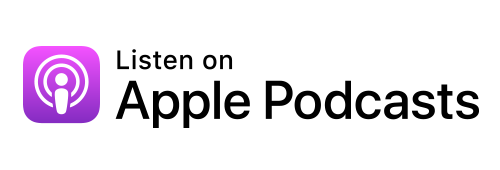

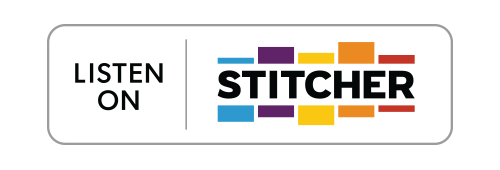


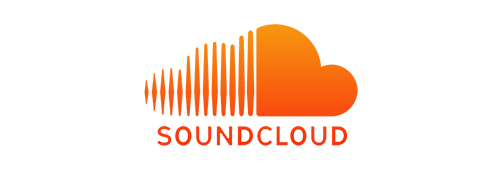

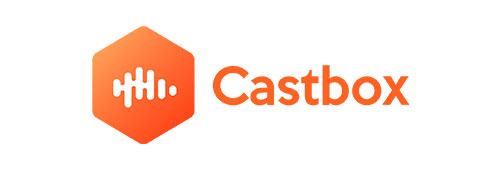
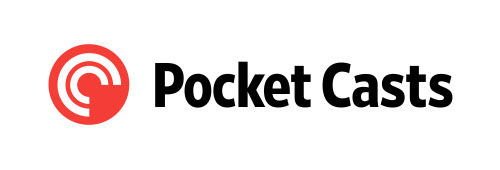

Leave a Reply